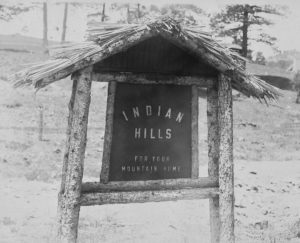 Indian Hills is a place of ponderosa pine forests and flowery meadows with elevations between 6,800 feet and 7,800 feet. Once a summer campground for Ute Indians, it became home to hearty pioneers and then boomed in the 1920’s as a resort community, and finally expanded into the modern mountain community of today. Through the decades, Indian Hills has offered residents a community that is rich in history and founded on a strong sense of community that celebrates and supports each other. Now, at the beginning of the twenty-first century, it is the home of approximately 1200 residents and continues to be a coveted community in which to reside.
Indian Hills is a place of ponderosa pine forests and flowery meadows with elevations between 6,800 feet and 7,800 feet. Once a summer campground for Ute Indians, it became home to hearty pioneers and then boomed in the 1920’s as a resort community, and finally expanded into the modern mountain community of today. Through the decades, Indian Hills has offered residents a community that is rich in history and founded on a strong sense of community that celebrates and supports each other. Now, at the beginning of the twenty-first century, it is the home of approximately 1200 residents and continues to be a coveted community in which to reside.
The First Settlers of Indian Hills
The Ute Indians were the most consistent tribe to use this area as a summer campground. They are rumored to have had bitter feuds with the Arapahoe, Cheyenne, and Comanche in order to maintain control of this area. Over the years, the presence of the Ute tribe prevailed. Early evidence of American Indians in this area are documented by Indian Trail Trees also know as Indian Sign Trees, the American Indian artifacts recovered from the cave off 285 in the 1950’s and the Ute trail that was documented in early of accounts of Indian Hills from what is now Messiah Mountain over the east side toward the old Morrison Rd., formerly known as Strain Gulch.


Chief Colorow (1813-1888) and Chief Washington are the most notable American Indians in the area, both members of the Ute tribe. Their profiles grace the front of the sign at the entrance to Indian Hills to this day.
Early Pioneers

As pioneers began to settle into Indian Hills in the 1860’s the region was known first as the North Fork of Turkey Creek, and then as Parmalee Gulch after one of the earliest settlers in the valley. John D. Parmalee came to Colorado in 1860 at the age of 47. On February 1, 1866, the territorial legislature granted Parmalee a charter for his Denver and Turkey Creek Wagon Road Company to construct a wagon road leading from Denver by way of Turkey Creek Canyon toward South Park. This wagon road is still visible in several locations in the canyon.
Parmalee also operated a sawmill on Parmalee Gulch in the area above Giant Gulch Road, which was an old Indian trail that was converted into a stagecoach road. Parmalee Gulch Road was completed in 1870. The residence known as Parmalee House was believed to have been built in 1859. It housed the Post Office from 1926 until 1951.
Maggie Crow was the first mail carrier in the mountains between Morrison and Conifer in the late 1800s. She packed a gun and cracked a whip as well as any man, earning a total of 76 cents her first year. She was awarded the mail contract for the Star Route West out of Morrison to Conifer, up Turkey Creek Canyon. During bitter cold winter days, she sat on her hands to keep them warm, and kept her seat warm by sitting on a big rock she had heated the night before in her wood-burning range.
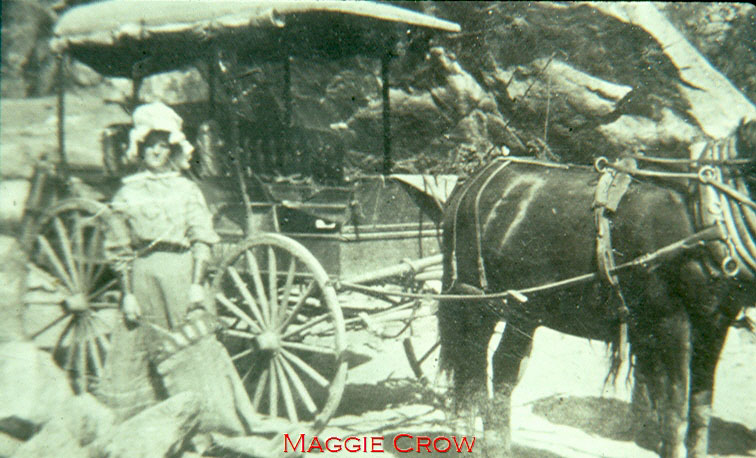
During the 1860s and 1870s, various circumstances brought many adventurous spirits to Colorado, Jefferson County, and Parmalee Gulch. The Railway Act of 1850 had encouraged settlement by granting land to companies that agreed to open up the West. The names of John Evans, Jay Gould, and Russell Sage appear on many land abstracts in Parmalee Gulch. Of these three, only John Evans remained in Colorado to pursue a long career of enterprise and service; President Lincoln appointed him second territorial governor in 1862.
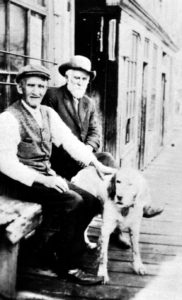
The earliest record of settlers in the area includes the name of Martin V. Luther, who came to Colorado in 1861 and settled in the upper part of the valley. The Ute Indians frequently camped on the Luther ranch on their way to and from the mountains. Mrs. Luther knew Colorow and Washington, two Indian chiefs, very well, and they were entertained with courtly hospitality many times by her and her husband. The Indian trail to Morrison was used by early settlers to drive cattle to shipping points there.
Ranching, farming, and lumbering were the sources of livelihood in the late 1800s. The most successful industry was hauling wood to Morrison for shipping to Denver. Potatoes also were grown for the Denver market, and sheep were grazed on the hills.
In the 1880s Benjamin F. Eden, the second tollgate keeper on the Turkey Creek Wagon Road, started buying property from Martin Luther and the Union Pacific Railroad in the broad, open western end of the valley. His holdings were know as Eden Park, amounting to well over 1000 acres. In 1890 he was persuaded to sell some of his land; however, development of that land was thwarted by the silver crash and financial disasters of 1892. His family remained, raising horses, cattle, grain, and hay.
Turn of the Century
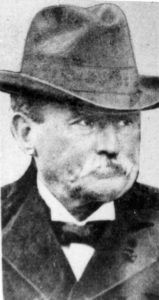
In 1911 a charter amendment was passed by Denver for a mountain park system. 13,448 acres were acquired in all, 12,000 acres being in Jefferson county. Two of the parks, Pence and O’Fallon, are on the western boundary of Indian Hills.
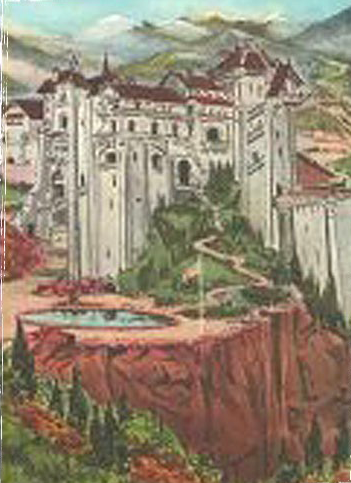
Perhaps the most picturesque park area adjacent to Parmalee Gulch is Mount Falcon, owned in 1911 by John Brisbane Walker. He built a home there, and envisioned a summer White House atop Mt. Falcon. President William H. Taft expressed an interest in the plan, but never visited the site. About 1919 Walker invited President Woodrow Wilson to lay the cornerstone. Although he did not attend, an impressive parade of Stanley Steamers zigzagged up the road from Morrison (now a hiking trail) to the top of Mount Falcon for the ceremony. Shortly thereafter Walker encountered financial difficulties, and the castle was never completed. His own house was destroyed by fire in 1918.
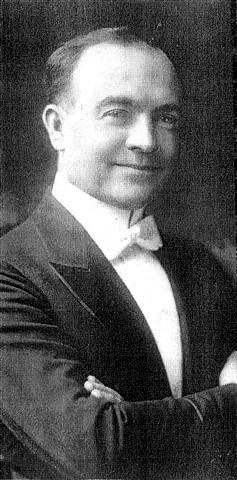
Decades later in 1975 signatures of interested citizens and children of Indian Hills were submitted to the Citizens’ Open Space Advisory Committee in Jefferson County, urging that Mt. Falcon be purchased. The County Commissioners paid $454,912.80 for the 1490-acre park.
In 1918 George Olinger of Olinger Mortuaries in Denver began to purchase land for development of summer cabins, to be called Indian Hills.
The Roaring 20’s
Olinger bought the 160 acre quarter-section at the mouth of Parmalee Gulch and christened it Arrowhead Park, the first filing of Indian Hills, in 1923. Large billboards were placed at the Turkey Creek and Bear Creek entrances to Parmalee Road advertising “Indian Hills for Your Mountain Home.” Lots generally 50 by 100 feet were priced as low as $100 a pair. Timber for cabins was cut from the hillsides and dragged to building sites by teams of horses or mules.

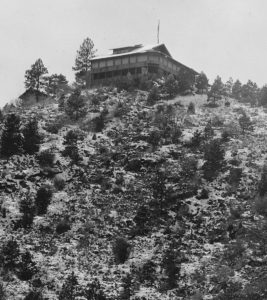
Bona Vista was built by Joe Bona of Olinger Mortuaries and sits on top of the southeast cliffs at the entrance to Indian Hills. A number of cabins built during that period have been winterized and are now year-round residences.
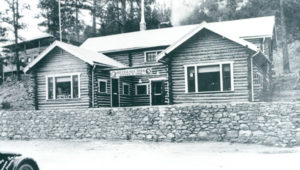
HoChaNeeStea, or Chief’s Inn, a tea room and soda fountain, was constructed near the entrance. It was the first stopping place for buses or cars bringing sightseers and prospective buyers to Indian Hills. Located across from the present Post Office, it later became a grocery store called The Trading Post, later a private residence, and is currently home to The Meeting Sanctuary. After the first filing, the second, third, and fourth filings up the valley were platted in quick succession. The fifth filing in Eden Park, promoted by a rodeo in 1925, included the Indian Hills Country Club House and plans for a nine-hole golf course.
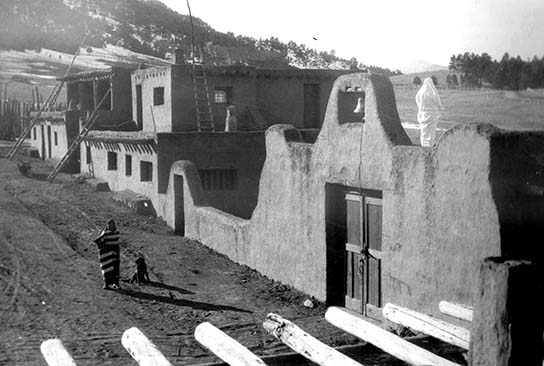 The NaTeSo Pueblo, built in a meadow in Eden Park, was an imaginative promotional project. The adobe bricks were hand made (on the property) and laid by members of the Navajo, Tesuque, and San Ildefonso communities in New Mexico, and the name combined a syllable from each of the three tribes. Buses left Denver twice a day to transport the interested and curious to the pueblo, where the Indians demonstrated pottery-making, weaving, and other Indian crafts. Today, this is a private home.
The NaTeSo Pueblo, built in a meadow in Eden Park, was an imaginative promotional project. The adobe bricks were hand made (on the property) and laid by members of the Navajo, Tesuque, and San Ildefonso communities in New Mexico, and the name combined a syllable from each of the three tribes. Buses left Denver twice a day to transport the interested and curious to the pueblo, where the Indians demonstrated pottery-making, weaving, and other Indian crafts. Today, this is a private home.
In addition to these attractions, there was an effort to establish a cultural center where writers, artists, actors, and musicians could establish summer retreats. The writer’s colony met in Indian Hills from 1926 through 1929 for six weeks each summer. An artist’s colony called Monte del Ouray was established, and the Valasek School of Music was advertised.
The Summer Camps

Several summer camps were established in Parmalee Gulch, beginning with Geneva Glen. In 1922 the Olinger Corporation gave approximately 100 acres of land to the International Sunday School association, to be used for high school and college-aged girls and boys and training sessions for Sunday school teachers. It is now a private camp.
Messiah Mountain, a Lutheran-owned facility, is used for continuing education and recreation. It is housed in the former Stonecrest, home of a summer theater group in the 1920s. St. Anne’s in the Hills was built as a camp in 1924 by the Episcopal Church of the Ascension in Denver. It was given to the Sisters of St. Anne in 1930.
Foss Park, built on their 163-acre ranch by Martin and Susan Foss, became another camp. In 1938 it was deeded to the First Baptist Church in Denver. The Stone Chapel, built by Mr. Foss in memory of his wife, was in great demand for small weddings but is now a private residence.
Rejuvenation Era starting in the 1950’s
Following the roaring 20’s came the great depression which left Indian Hills- primarily a vacation home destination- abandoned for decades. In the 1950’s Jefferson County saw a boom in their population which quickly impacted Indian Hills. This resurgence of population brought in community minded  residents and lots of new events and community activities to Indian Hills, including the great 1976 Olympic debate.
residents and lots of new events and community activities to Indian Hills, including the great 1976 Olympic debate.
In 1947 Indian Hills Fire Department was established and the first purchase of a fire truck occurred in 1950. To this day an active and efficient volunteer fire department responds to fires and emergencies. The Fire Department has been hosting and organizing the 4th of July parade and celebration since 1958. The Indian Hills Volunteer Fire Department is also responsible for the coordination of the Movie in the Park Series.
One of George Olinger’s first projects in his development of Indian Hills was the installation of a summer water system, which was turned on in May and off in October, this would be the case until 1976 when a new system was then buried and the above ground system abandoned. Indian Hills Water District was organized in the 1950s to provide year-round water to many of the Indian Hills residences. They still serve as our water district here in Indian Hills and strive for quality water throughout our valley.
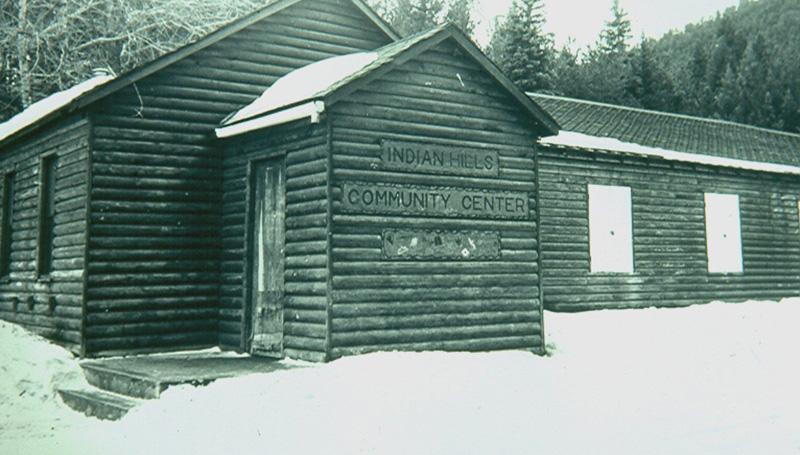 The Indian Hills Improvement Association was established in 1926, it was charged with the responsibility of making necessary arrangements for police, fire, and health protection for the area. The one-room building that had been used as a school from 1923-1949 was purchased and remodeled in 1952 to serve as a Community Center for the residents. At that time in the 1950’s the IHIA became more active and took on a new role focusing on community and historical preservation. Since then, the Improvement Association has sponsored many improvements in the community, promoted historical designation of buildings in the valley, organized yearly community cleanups, developed the Indian Hills Community Plan with Jefferson County officials in the 90’s, and maintains the Indian Hills website. Those witty comments at the Community Center are also organized through IHIA. Renting the community center helps to maintain the building and sponsor community events.
The Indian Hills Improvement Association was established in 1926, it was charged with the responsibility of making necessary arrangements for police, fire, and health protection for the area. The one-room building that had been used as a school from 1923-1949 was purchased and remodeled in 1952 to serve as a Community Center for the residents. At that time in the 1950’s the IHIA became more active and took on a new role focusing on community and historical preservation. Since then, the Improvement Association has sponsored many improvements in the community, promoted historical designation of buildings in the valley, organized yearly community cleanups, developed the Indian Hills Community Plan with Jefferson County officials in the 90’s, and maintains the Indian Hills website. Those witty comments at the Community Center are also organized through IHIA. Renting the community center helps to maintain the building and sponsor community events.
Share Your IH History
Have Indian Hills history that you’d like to share; artifacts, photos, stories? Please contact us so we can share and preserve our community’s eclectic history!
* adapted from: INDIAN HILLS: THE PLACE, THE TIMES, THE PEOPLE by Helen Brush and Catherine Dittman (1976), available at our Store
